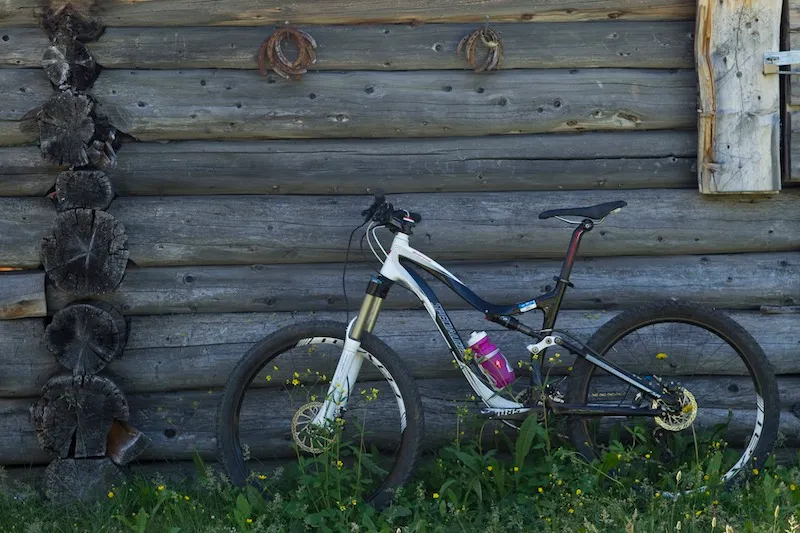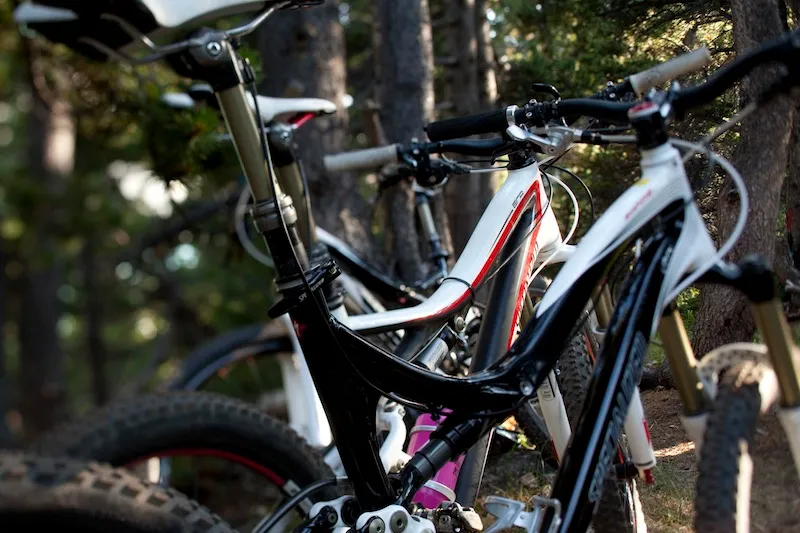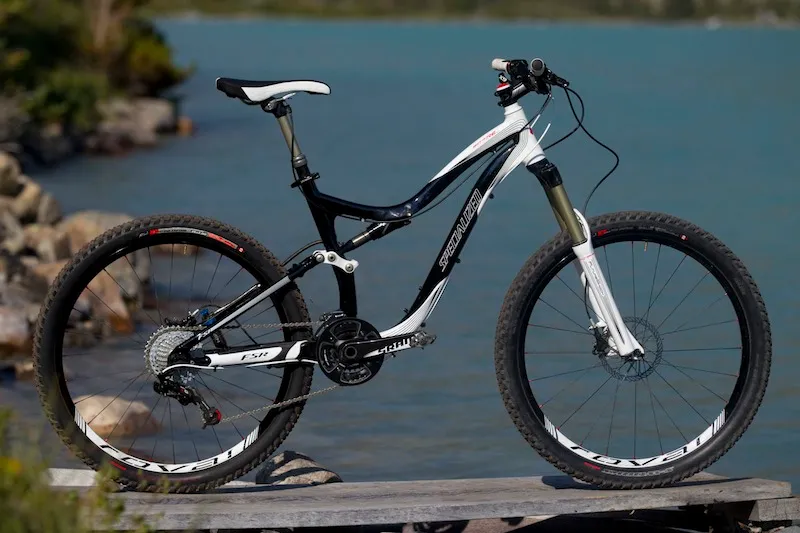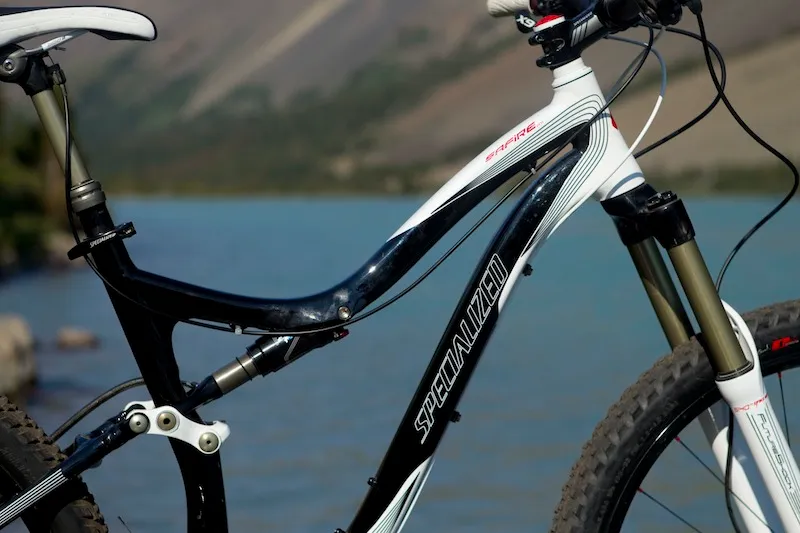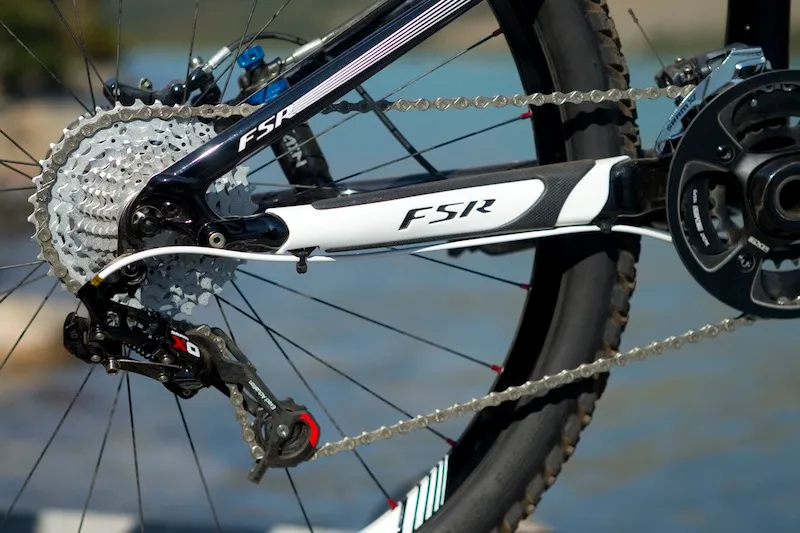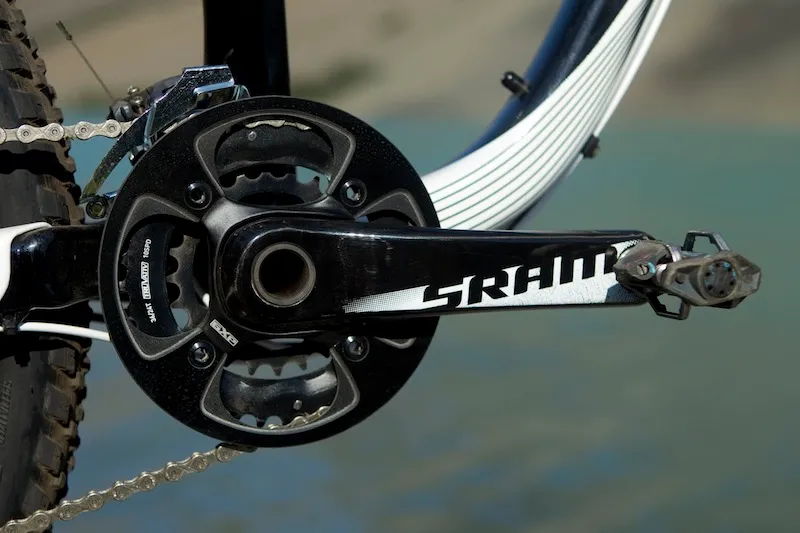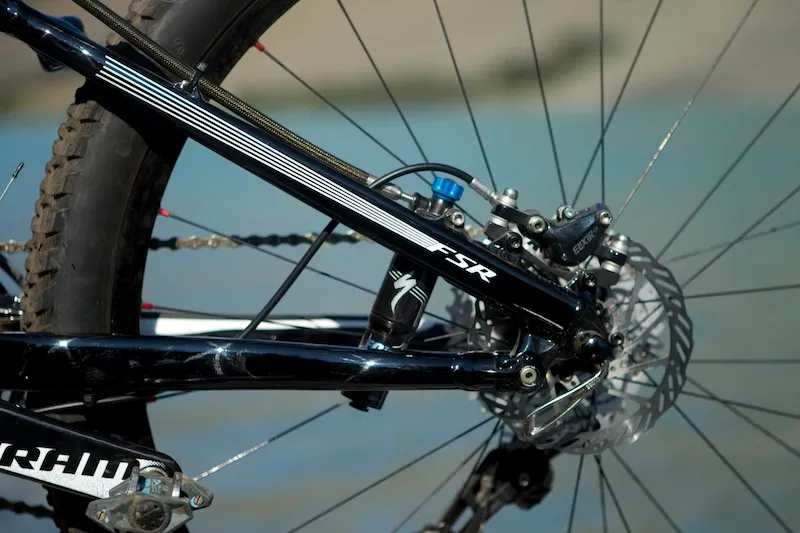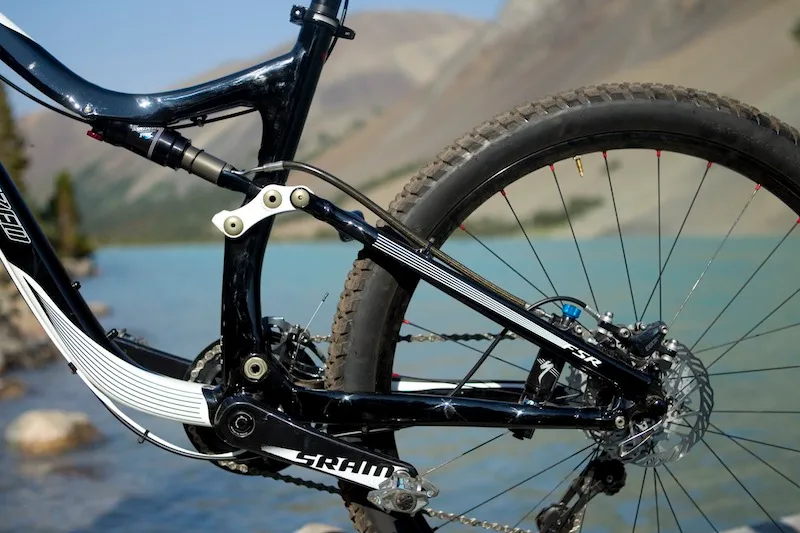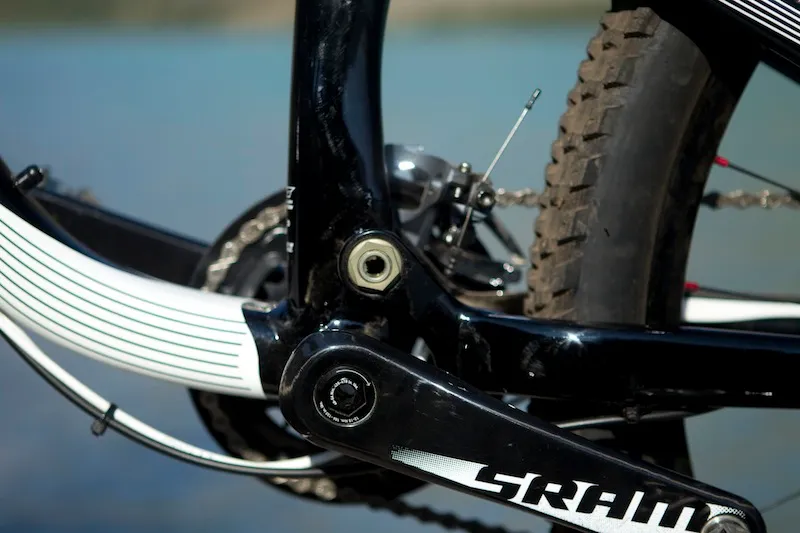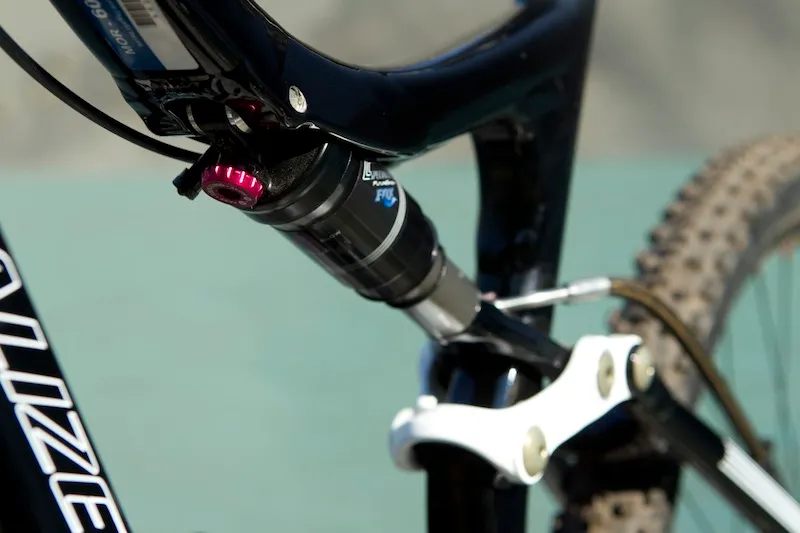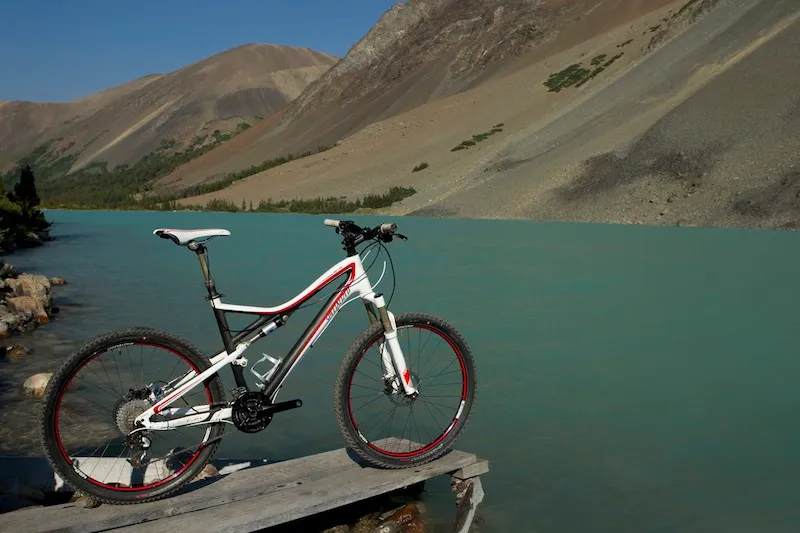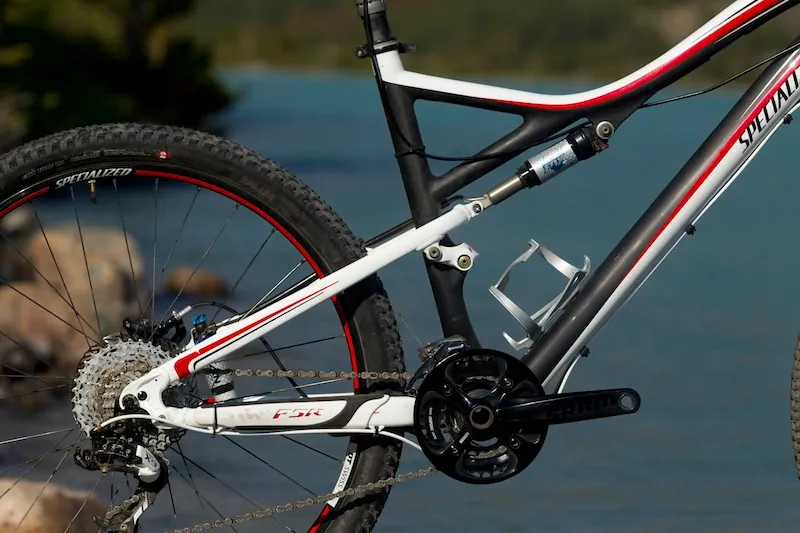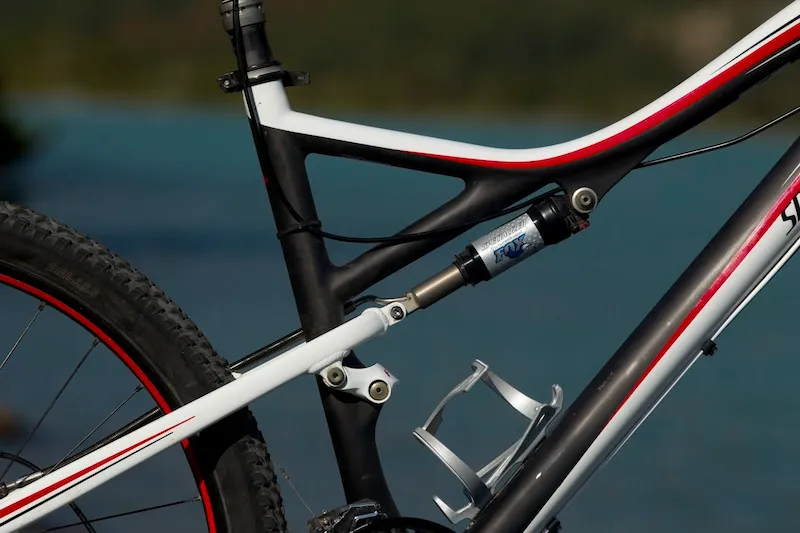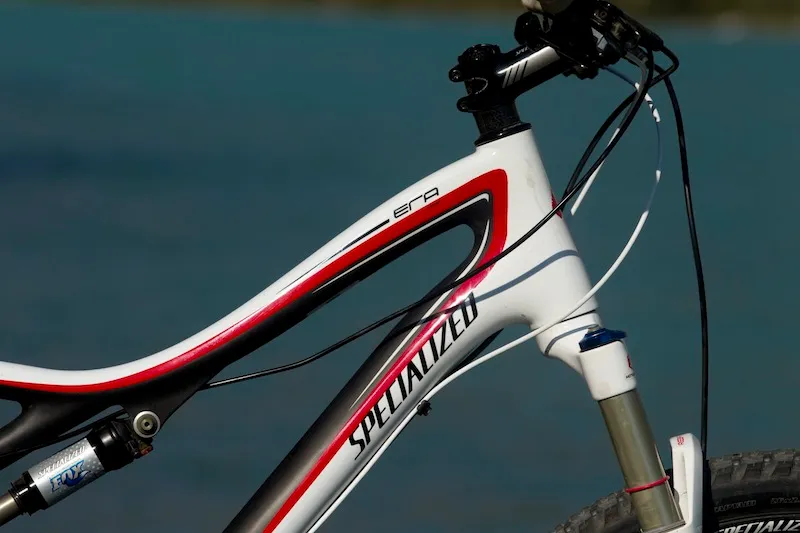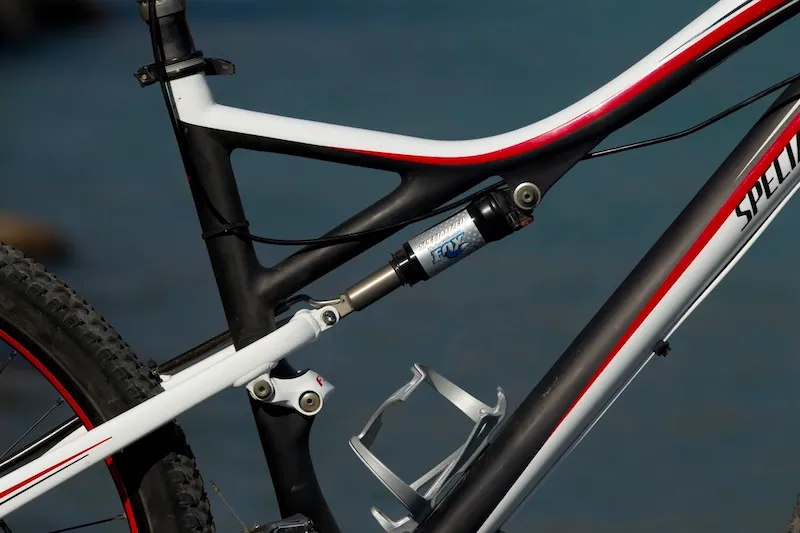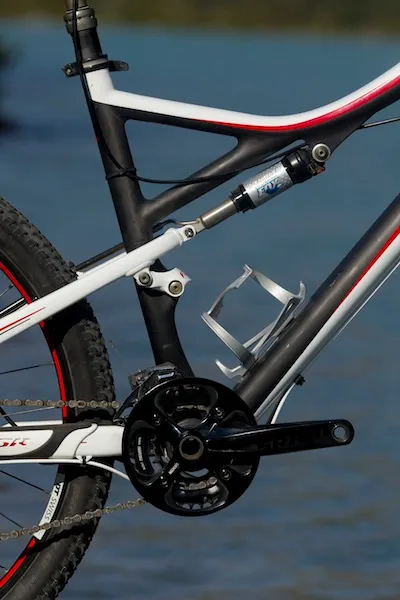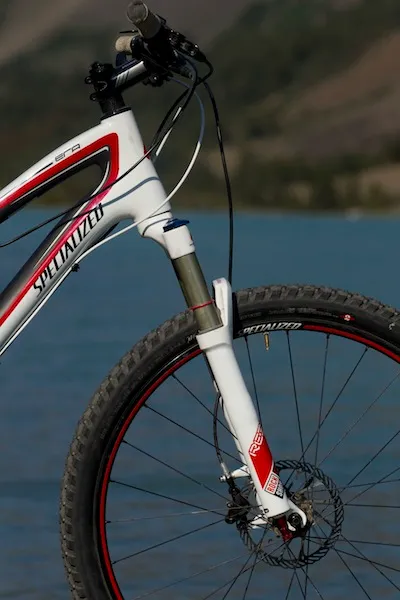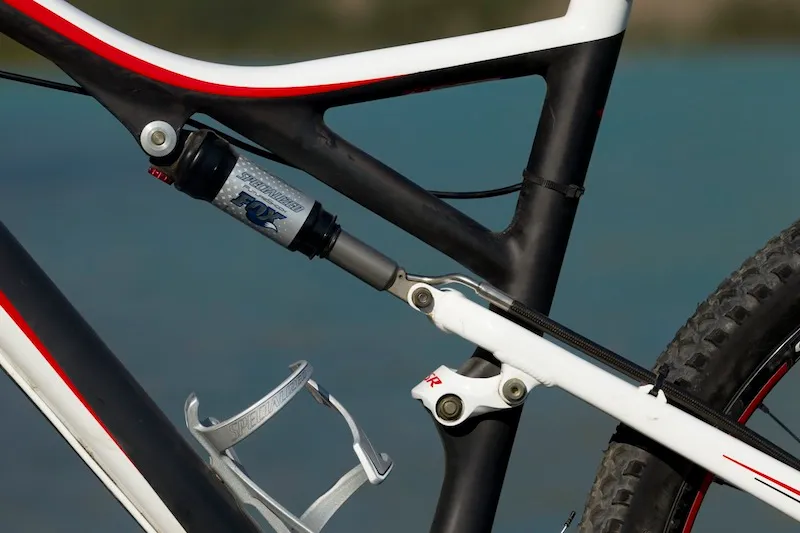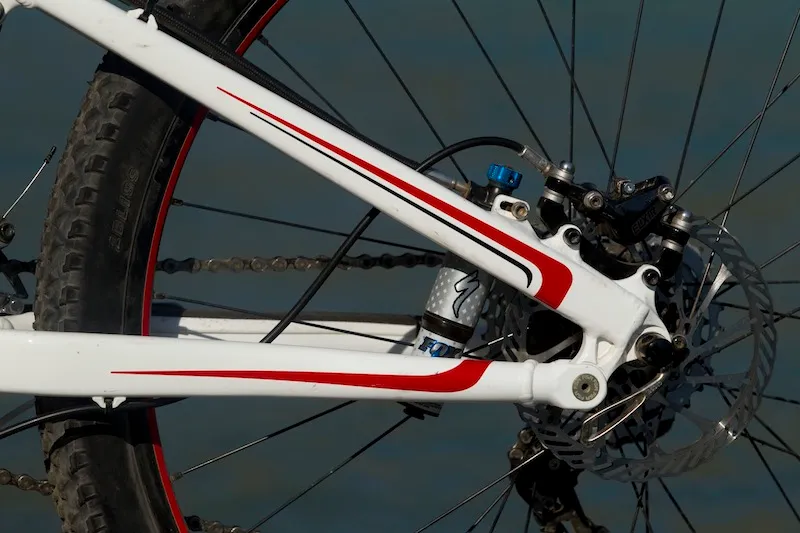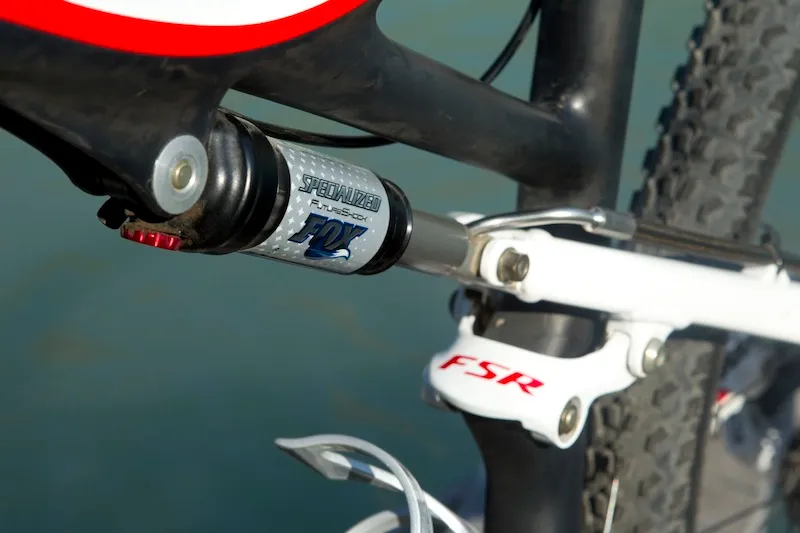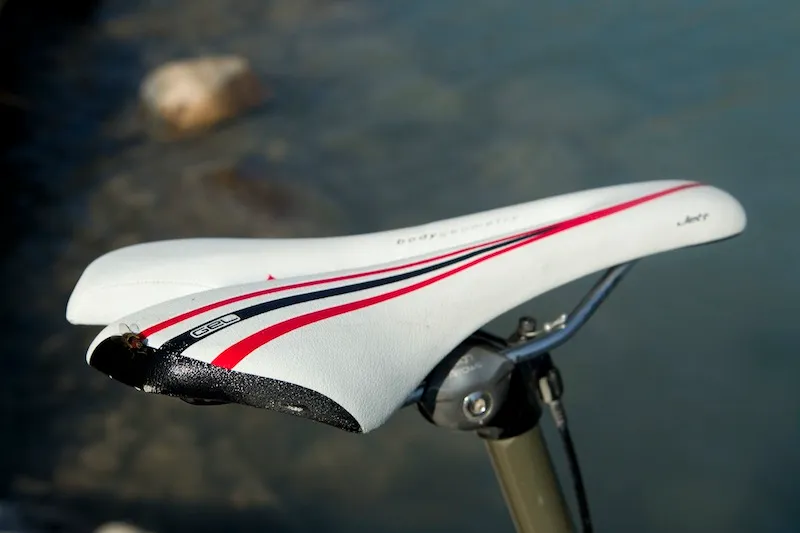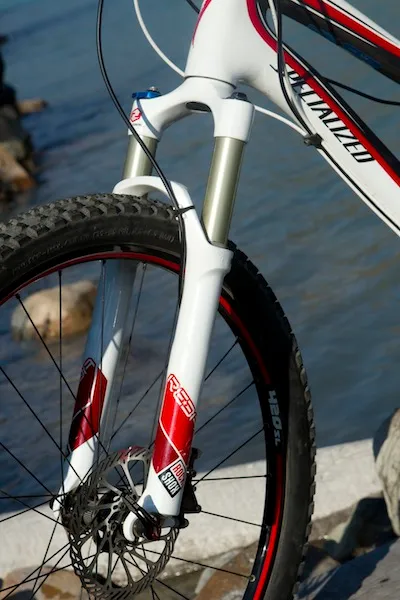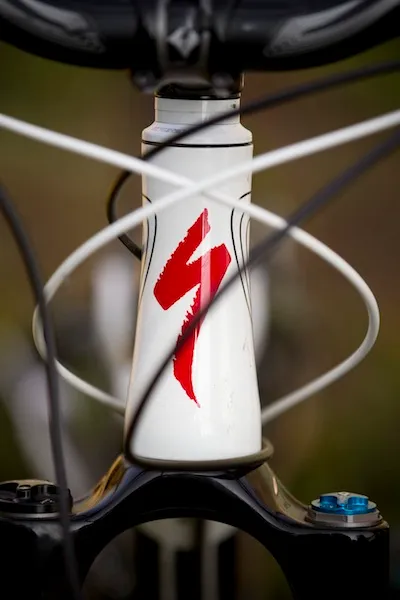Specialized strives to set a bar for women’s bike design. Recently, it conducted a stand-alone introduction for its 2011 Safire and Era mountain bikes at a women's-only product launch in the Chilcotin Mountains of British Columbia, Canada.
Cyclingnews' Sue George was on hand to ride the first pre-production models of Safire and Era made available by Specialized for the launch.
Both the all mountain-oriented Safire and its cross country cousin, the Era, were officially introduced at a company-wide mountain bike product launch earlier this summer, but the bikes were given added time in the spotlight to highlight their unique development for 2011.
According to Specialized the 2011 women’s line represents the first time in their history that women's product and engineering staff were given free reign to develop something entirely separate from the men’s models. The design of both bikes evolved independently of the men's bikes.
"Normally our women's bikes are engineered in tandem with other projects, often a men's bike," said Rachael Lambert, Specialized's women's product and marketing manager. "This time the senior engineer on these bikes, Dave Allen, had two full-suspension women's bikes on his project list and he had the ability to develop each as they needed, based on our targets for weight, standover, layout and suspension. For us, it's a unique approach."
Lambert explained that Specialized's women's bikes differ from its men's bikes in three main ways: geometries, tubesets and suspension design and tune.
Specialized designed both bikes' geometries for women to account for specific reach, standover and toe-overlap issues.
When it came to making the frames, it was not simply a matter of scaling the tubesets; the company designed different top tubes, downtubes and head tubes for each women's size. Specialized adjusted the layups (for the carbon frames), and the diameters and shaping of the alloy tubes to meet specific stiffness targets for the small, medium and large sizes. The women's bikes are manufactured with their own moulds and no longer share tooling with the men's line-up.
In addition, Specialized designs the women's bikes' front and rear suspension around a target median of a 5'4", 150-pound /- 40 pounds woman (vs. a 5'9", 180-pound male for it's men's bikes). This results in a design in which more female riders use more of the available travel before the spring curve steepens at the end of the suspension's given total travel.
The Safire
The Safire is the gem of the Specialized women's bike line-up. The bike has already been in the line for three years, but it underwent a complete re-design for 2011. Specialized’s main goals in the redesign were to lower and lengthen the way riders sit on the bike and to improve the rear suspension performance.
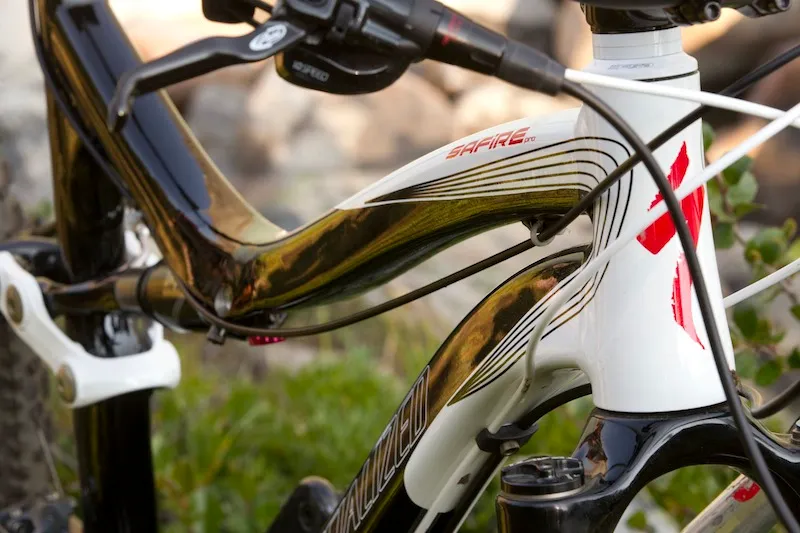
The Specialized Safire features a tapered head tube with integrated bearings, keeping the front end lower
"The old Safire felt too tall, so we lowered the front end," said Lambert, who explained Specialized's two approaches to doing so: by using a smaller head tube and an integrated headset. "We looked at the bike's stack and reach to make it feel longer and lower - not just the top tube length."
The changes were made with no compromises to the bike's well-known generous standover clearances.
Another big change was the adoption of inline suspension, which is the popular FSR-type suspension currently used on some of the men's bikes. In the design, which improves handling and rear wheel tracking, the proximal end of the shock mounts to the top tube. To accomplish this mounting and keep the Safire's standover height low, the upper mount for the rear shock is nestled into a hollowed-out top tube. Previous Safires had used an older rocker-type suspension design.
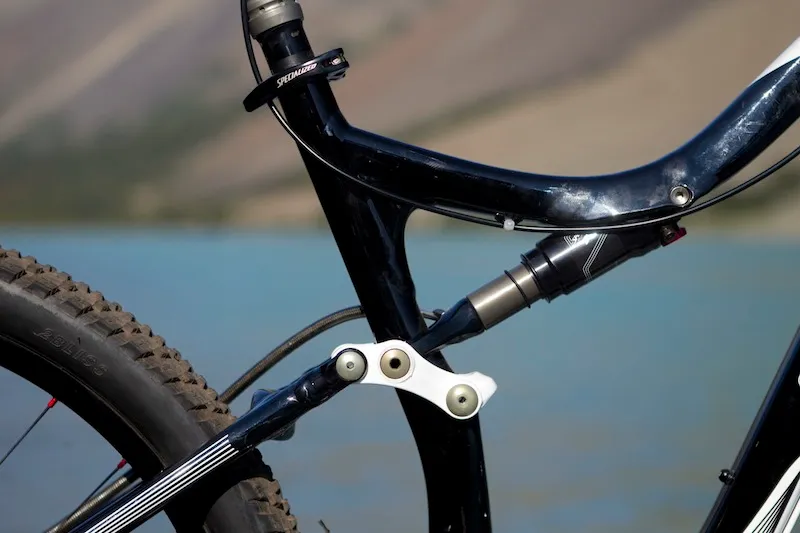
The Specialized Era also has FSR in-line type suspension
During its 12-month start-to-finish development, the 2011 Safire underwent four iterations of suspension design. The company used the input of a dozen test riders of various body types and riding styles and disciplines before settling on a final suspension design.
"Our field testers ranged from Super D and cross-country racers, to downhill racers, to everyday riders who put in a lot of ride time,” she said. “They all added something to the bike.”
Looking closer at the Safire FSR Pro test bike, shows that Specialized uses a volume-reducing shim and altered air can design to create an active-feeling rear suspension that includes their proprietary Brain. The spring curve steepens at the end, but later than some of its other designs. The rear shock was designed in-house by Specialized but built by Fox. Riders have the option to turn their brain on or off with several settings.
A Specialized Future S140 shock, sans Brain, graces the front end with travel that can be set to 115mm or 140mm by turning a knob atop one of the fork legs. Specialized removed the Brain from the fork in response to customer feedback, however, it still offers an aftermarket front shock Brain cartridge for those who prefer it.
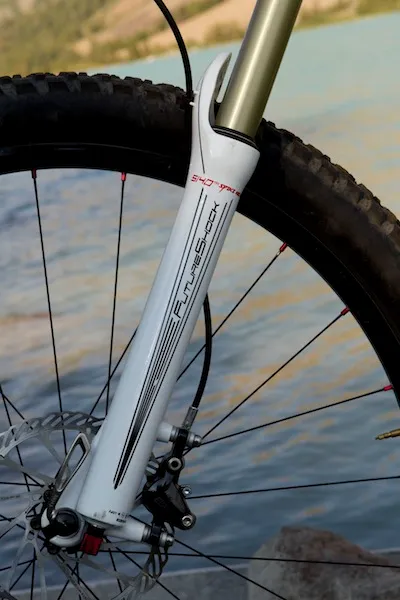
The Specialized Future Shock S140 handles front suspension duties on the Specialized Safire
The Safire's frame is made of Specialized’s proprietary M5 aluminum alloy. Its top tube is made from three pieces: two hydroformed tubes on either end joined by a forged hollow centerpiece, which accommodates shock attachment. However, both junctions are welded and then sanded so the top tube appears to be one piece upon assembly and painting.
The Safire comes in the FSR Pro (tested in size medium) and FSR Comp models. The key differences include the suspension and drivetrain. The Pro model has a Specialized Future Shock S140TA on the front with 115-140mm travel and a Specialized/Fox Brain Shock with 120mm of travel and Safire tuned inertial damper on the rear. The Pro model also comes with a SRAM 2x10 drivetrain.
The Comp is the second model in the line-up; it features a RockShox Reba RLT with 120mm travel on the front and a Custom Fox Triad II with 120mm of travel on the rear. It comes with a 22-33-44 triple.
Lambert said the company declined to include a carbon Safire model in its line-up because they hadn't been getting enough traction at local dealers.
"Shops were not stocking the carbon models," she explained. "So we decided to focus on the aluminum and in doing so, were able to lower our weight targets."
According to Specialized, the Pro model weighs in at 25.3 pounds, and the Comp tips the scales at 26.3 pounds (without pedals).
The availability of the two models, the Safire FSR Pro or Comp, reflects a reduction from four 2010 models.
The Era
The Era is Specialized's performance-oriented cross-country bike and also comes in two models: the Era FSR Comp Carbon and the FSR Comp. The design was largely carried over from previous years.
The 2010 Era Comp Carbon frame is a one piece, carbon front triangle matched to a rear M5 Aluminum alloy rear triangle whereas the Comp model is an all aluminum affair. Specialized mixed carbon and aluminum materials on its higher-end Era in order to reap some the benefits of carbon in a frame at a more affordable price point.
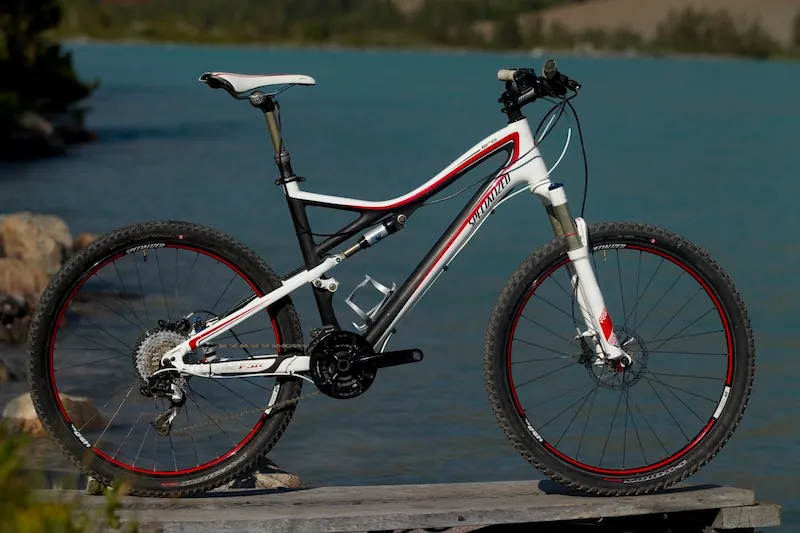
The 2011 Specialized Era features a FACT carbon main frame and M5 rear swingarm
The same approaches to suspension tuning, geometrical approaches and custom tubesets were applied to the Era as to the Safire, but the 100mm of rear suspension on both Era models is handled by a Fox/Specialized Mini Brain while the RockShox Reba RLT takes care of 100mm of front suspension.
The Comp Carbon comes with a double while the Comp has a triple.
First rides
What better way to launch two women's mountain bikes than to take a bunch of female mountain bike journalists to a remote place deep in the heart of British Columbia for some field testing? That's just what Specialized did — give some early pre-production test ride time in the sort of conditions for which the bikes were designed: the rugged Chilcotin mountains a few hours northeast of Whistler in British Columbia.
Era
On day one, consisted of 8 hours on the new Era over singletrack through coniferous forests and high Alpine terrain. The trip included a mix of natural-surface, narrow singletrack trails and all kinds of gradients, up and down.
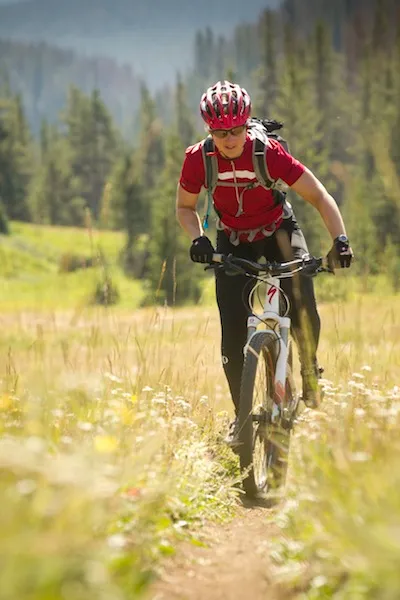
Mountain Bike Editor Sue George rides the Specialized Era over Lorna Pass
The Era had already proven itself a race-worthy bike after Norwegian Lene Byberg won a World Cup on it last year in Bromont, Canada. That said it rode like a cross-country bike with agile and responsive handling. It felt like it'd be fun to race; however, it also seemed to eat up all the backcountry terrain. It gracefully floated over the technical sections.
The front and rear suspensions were well balanced. It felt active and plush, but not soggy. Having spent much of my fully suspended riding life on "men's bikes", riding this suspension, tuned for "average" women felt noticeably more active and fully utilized.
The rear suspension's Brain could be turned off for a super plush ride or turned on (over 11 increments) so that we could adjust the feel to suit personal riding style and preference. We tended to ride with the brain mostly on (position 7 or 8), which eliminated any feedback and produced an efficient feel when applying power to the pedals.
The Era stuck to the ground perfectly on super steep climbs, with front end staying down and rear wheel getting good traction. In the granny gear (a 24 x 36) we spun up all but the steepest and loosest climbs where the problem was more traction than the gears.
Era is the sort of bike that lets a rider steer a bit with the bars and a bit with the hips — as the trail conditions dictated — and it ate up all the technical sections encountered on the trip's first day.
The bike came with S-Works The Captain and Fast Trak LK racing-oriented tires that we found a bit challenging to negotiate over the often dusty, loose and rocky terrrain, but there was plenty of clearance. Had we not been in such a remote location, we'd have swapped for fatter tires better suited to the mountainous terrain.
Riding Safire
After a day on the Era, the Safire felt noticeably heavier and slower to handle. Climbs were more challenging due to its heavier weight and its slacker geometry, even though the adjustable fork allowed for lowering the front end on climbs for better traction.
Pointed down, however, the Safire was super stable and confidence inspiring even on the steepest terrain.

Safire handled the Alpine descents with aplomb
As with the Era, the Safire ate up all the technical terrain and steepness we could throw at it in the Chilcotins, but unlike the Era, it felt like it had much more to give if asked.
On both bikes, it was impossible not to notice the Brain in the rear suspension, especially on flat and pedaling sections. The Brain and the sometimes thud-like feeling that goes along with it when it’s doing its "thinking" was at first distracting and made me think my bike may not have been set up properly. Specialized's Lambert checked it out and assured me that what I was feeling was "normal" for the Brain.
I rode both bike models with one non-stock option: Specialized's Command Post, a drop-style seatpost with remote, bar-mounted control. It proved super useful on both bikes given the nature of our testing... lots of steep uphill and steep downhill. With three settings - high, medium and low - it was easy to change saddle position on the fly to enable the shifting of weight and center of gravity up, down, forward and backward for optimal handling. In terrain such as the Chilcotins, a Command Post would be a no-brainer (pun intended) to install and use....

The test bikes featured a Command Post, Specialized's own remote adjustable dropper seatpost, which is not stock on the production bikes
